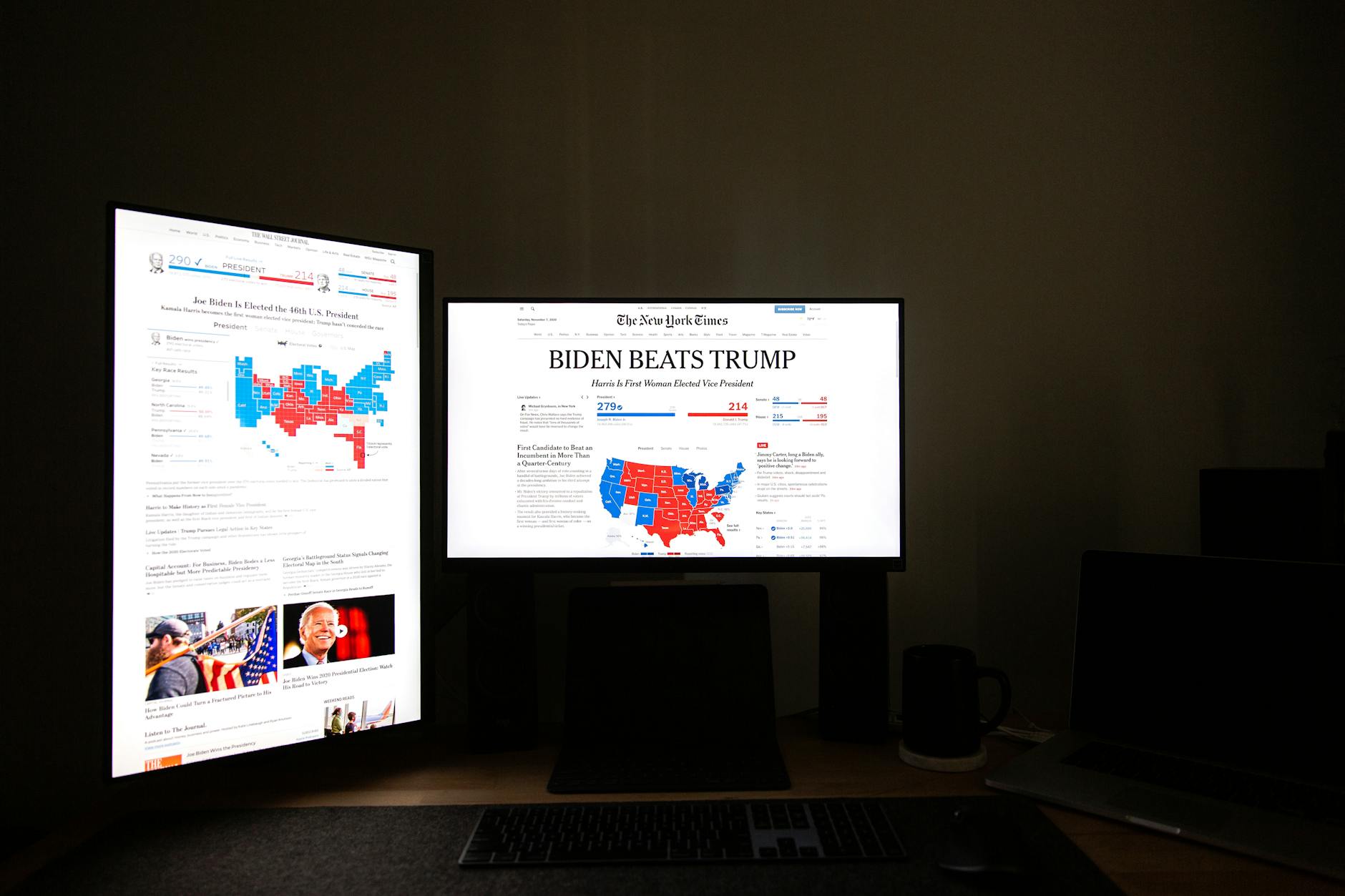Navigating the Shifting Sands: Unpacking the Democratic Party’s Strategic Vision
Beneath the surface of partisan debate lies a complex calculus shaping the future of American governance.
In the often-turbulent landscape of American politics, understanding the strategic objectives of any major political party is crucial for informed citizenship. The Democratic Party, a cornerstone of the nation’s political discourse, is no exception. As the United States grapples with profound societal changes, economic pressures, and a deeply entrenched political divide, the question of the Democrats’ ultimate aims—their “endgame”—becomes increasingly pertinent. This article aims to explore these objectives, examining the context from which they arise, analyzing the proposed strategies, and considering the potential implications for the nation.
The term “endgame” itself suggests a long-term vision, a series of interconnected goals that guide a party’s actions and policy proposals. For the Democratic Party, this vision is shaped by a confluence of historical currents, evolving societal values, and the specific challenges of the 21st century. It is a vision that seeks to address systemic inequalities, adapt to technological and environmental shifts, and redefine the role of government in American life.
It is important to approach this topic with a commitment to objectivity, recognizing that political strategies are multifaceted and often subject to interpretation. While the source material may present a particular perspective, this analysis strives to provide a balanced overview, incorporating diverse viewpoints and factual information to paint a comprehensive picture of the Democratic Party’s strategic direction.
Context and Background: The Evolving American Political Landscape
To understand the Democrats’ endgame, it is essential to first grasp the broader context of American politics. The nation is currently experiencing a period of significant polarization, with deep ideological divides separating the major political parties. This has been exacerbated by shifts in media consumption, the influence of social media, and a changing demographic landscape. The Democratic Party, like the Republican Party, has had to adapt to these new realities, re-evaluating its messaging, its coalition-building strategies, and its policy priorities.
Historically, the Democratic Party has been associated with a progressive agenda, advocating for social justice, economic fairness, and a robust social safety net. From the New Deal era to the Great Society programs, Democrats have often championed government intervention to address societal problems and promote the welfare of its citizens. However, the party’s platform and priorities have evolved over time, reflecting changing societal norms and emerging challenges.
In recent decades, the Democratic Party has seen a significant demographic shift, with its base increasingly composed of urban dwellers, minority groups, and younger voters. This has influenced the party’s focus on issues such as climate change, racial justice, income inequality, and LGBTQ+ rights. Simultaneously, the party has had to contend with the ongoing debate about the size and scope of government, a perennial theme in American political discourse.
The political climate is also marked by a growing skepticism towards established institutions and a demand for greater transparency and accountability. This has created an environment where parties must not only articulate their policy goals but also demonstrate their ability to deliver tangible results and connect with voters on a personal level. The Democrats’ endgame, therefore, is not simply about enacting a specific set of policies, but also about rebuilding trust and demonstrating the relevance and effectiveness of their approach to governance.
Furthermore, the global context plays a significant role. Issues such as international relations, trade, and the impact of globalization on the American economy are all factors that shape the Democratic Party’s long-term strategy. As the United States navigates a complex and interconnected world, the party’s vision for domestic policy is often intertwined with its approach to foreign affairs and its role on the global stage.
Understanding these contextual elements provides a crucial foundation for analyzing the specific strategies and objectives that constitute the Democratic Party’s endgame. It helps to illuminate why certain issues are prioritized and how the party seeks to achieve its broader goals within the framework of contemporary American society and the global landscape.
In-Depth Analysis: Core Pillars of the Democratic Endgame
The Democratic Party’s endgame can be understood as a multi-pronged strategy aimed at achieving a more equitable, sustainable, and inclusive America. While specific policies and proposals may shift with the political winds, several core pillars consistently emerge:
1. Economic Fairness and Opportunity: A central tenet of the Democratic vision is the belief that the economy should work for everyone, not just the wealthy. This translates into a focus on policies designed to reduce income inequality, expand access to affordable healthcare and education, and strengthen the social safety net. Key initiatives often include:
- Raising the minimum wage to ensure a living wage for all workers.
- Investing in infrastructure projects and clean energy to create jobs and stimulate economic growth.
- Expanding access to affordable childcare and pre-kindergarten programs to support working families.
- Strengthening Social Security and Medicare to ensure their long-term solvency and adequacy.
- Implementing progressive tax policies, where those with higher incomes contribute a larger percentage of their income in taxes.
2. Climate Action and Environmental Stewardship: The existential threat of climate change is a defining issue for the Democratic Party. Their endgame includes a comprehensive approach to transitioning to a clean energy economy, reducing carbon emissions, and protecting natural resources. This involves:
- Investing heavily in renewable energy technologies such as solar, wind, and geothermal power.
- Setting ambitious targets for reducing greenhouse gas emissions in line with international agreements.
- Promoting electric vehicles and investing in public transportation infrastructure.
- Implementing regulations to protect air and water quality and conserve biodiversity.
- Rejoining and strengthening international climate agreements, such as the Paris Agreement.
3. Social Justice and Equity: Addressing systemic inequalities based on race, gender, sexual orientation, and other identities is a core component of the Democratic endgame. This involves advocating for policies that promote civil rights, voting rights, and equal opportunity for all Americans. Key areas of focus include:
- Protecting and expanding voting rights to ensure fair and accessible elections.
- Advancing criminal justice reform to address racial disparities in the legal system.
- Championing LGBTQ+ rights and protections against discrimination.
- Working to close the gender pay gap and promote women’s economic empowerment.
- Investing in communities that have historically faced disinvestment and discrimination.
4. Strengthening Democracy and Governance: The Democrats’ endgame also includes a commitment to reinforcing democratic institutions and improving the functioning of government. This often involves:
- Campaign finance reform to reduce the influence of big money in politics.
- Promoting ethics reforms and measures to increase government transparency.
- Investing in education and civic engagement to foster an informed and active citizenry.
- Ensuring the integrity of electoral processes and combating misinformation.
5. Global Engagement and Diplomacy: On the international stage, the Democratic endgame generally favors a multilateral approach, emphasizing diplomacy, international cooperation, and the strengthening of alliances. This includes:
- Engaging in diplomatic efforts to resolve global conflicts and promote peace.
- Supporting international organizations and agreements that address global challenges.
- Promoting democratic values and human rights abroad.
- Collaborating with allies on issues of shared concern, such as national security and economic stability.
These pillars are not mutually exclusive but rather interconnected elements of a broader vision for the country. The Democrats’ endgame is a dynamic and evolving strategy, responsive to the changing needs and aspirations of the American people.
Pros and Cons: Evaluating the Democratic Strategy
Like any comprehensive political strategy, the Democratic Party’s endgame presents both potential benefits and significant challenges. A balanced assessment requires considering these different facets:
Potential Advantages (Pros):
- Addressing Systemic Inequalities: The focus on economic fairness and social justice has the potential to lift up marginalized communities and reduce disparities that have long plagued American society. Policies aimed at increasing wages, expanding healthcare access, and ensuring equal opportunity can lead to broader societal well-being.
- Climate Change Mitigation: The commitment to climate action is crucial in addressing a global crisis. Swift and decisive action can help avert the most catastrophic impacts of climate change, promoting long-term environmental sustainability and public health.
- Strengthening Democratic Norms: Efforts to protect voting rights and reform campaign finance can enhance the health and inclusivity of American democracy, making it more representative and responsive to the will of the people.
- Global Stability and Cooperation: A focus on diplomacy and international alliances can foster a more stable and cooperative global environment, which in turn can benefit American economic and security interests.
- Economic Stimulus and Job Creation: Investments in infrastructure, clean energy, and social programs can stimulate economic activity, create jobs, and foster innovation, leading to broader prosperity.
Potential Criticisms and Challenges (Cons):
- Economic Concerns and Government Spending: Critics often raise concerns about the potential cost of extensive government programs and investments. Debates about the national debt and the impact of taxes on economic growth are frequent points of contention.
- Effectiveness of Government Intervention: The extent to which government intervention can effectively solve complex societal problems is a subject of ongoing debate. Some argue that free-market principles and private sector solutions are more efficient.
- Political Feasibility and Polarization: The deeply polarized nature of American politics can make it challenging to implement ambitious policy agendas. Significant opposition and partisan gridlock can hinder progress.
- Unintended Consequences: As with any large-scale policy initiatives, there is always the potential for unintended consequences. Careful planning and evaluation are necessary to mitigate such risks.
- Balancing Diverse Interests: The Democratic Party represents a broad coalition of diverse interests. Balancing these different demands and priorities can be a complex undertaking, and compromises may be necessary that do not fully satisfy all constituents.
- Perception of Government Overreach: Some segments of the population may view an expanded role for government as an infringement on individual liberties or economic freedom, leading to resistance.
A thorough evaluation of the Democratic endgame requires weighing these potential benefits against the inherent challenges and criticisms. The success of their strategy will ultimately depend on their ability to navigate these complexities, build broad consensus, and demonstrate tangible positive outcomes for the nation.
Key Takeaways: Summarizing the Democratic Vision
- The Democratic Party’s endgame is centered on achieving a more equitable, sustainable, and inclusive America.
- Key policy pillars include economic fairness, addressing climate change, promoting social justice, strengthening democratic institutions, and engaging in global diplomacy.
- The party advocates for policies such as raising the minimum wage, investing in clean energy, protecting voting rights, and fostering international cooperation.
- Potential benefits include reduced inequality, environmental protection, and a more robust democracy.
- Challenges involve managing government spending, ensuring the effectiveness of interventions, overcoming political polarization, and navigating potential unintended consequences.
- The success of the Democratic strategy depends on its ability to gain broad public support and effectively implement its proposed policies.
Future Outlook: The Evolving Path Forward
The future trajectory of the Democratic Party’s endgame will undoubtedly be shaped by a dynamic interplay of domestic and global forces. As the nation continues to grapple with economic shifts, technological advancements, and evolving social norms, the party will likely adapt its strategies and priorities. Several key factors will influence this evolution:
Demographic Shifts: The ongoing diversification of the American electorate will continue to influence the Democratic Party’s coalition and its policy agenda. Issues of particular importance to younger voters, minority groups, and urban populations are likely to remain central.
Technological Innovation: The rapid pace of technological change, from artificial intelligence to biotechnology, presents both opportunities and challenges. The Democratic Party will need to develop policies that harness innovation for societal benefit while mitigating potential risks related to job displacement, privacy, and equity.
Climate Change Impacts: The increasing urgency of the climate crisis will likely drive further action and innovation in the energy sector and beyond. The party’s commitment to a green transition will be a defining element of its long-term vision.
Global Geopolitics: The international landscape is constantly shifting, with new geopolitical challenges and opportunities emerging. The Democrats’ approach to foreign policy and their role in global governance will be crucial in shaping their overall endgame.
Political Polarization: The persistent political polarization in the United States will continue to pose a significant challenge to any party seeking to implement transformative change. The Democrats will need to find ways to bridge divides and build broader consensus to achieve their long-term goals.
Looking ahead, the Democratic Party’s endgame is likely to remain focused on its core principles of fairness, sustainability, and inclusivity. However, the specific pathways to achieving these goals will undoubtedly evolve. The party may explore new approaches to economic development, innovative solutions for environmental challenges, and more effective methods for fostering civic engagement and democratic participation. The ability of the party to adapt, innovate, and connect with a diverse electorate will be critical to its success in shaping the future of the United States.
Ultimately, the effectiveness of the Democratic endgame will be judged by its ability to translate its vision into tangible improvements in the lives of ordinary Americans and to foster a more just, prosperous, and sustainable society for generations to come.
Call to Action: Engaging with the Democratic Vision
Understanding the strategic vision of any political party is the first step towards informed civic engagement. For citizens interested in the Democratic Party’s endgame, several avenues for engagement and further exploration exist:
- Stay Informed: Regularly consult reputable news sources, academic research, and official party platforms to gain a comprehensive understanding of the Democrats’ proposals and their underlying rationale. Organizations like the Democratic National Committee (DNC) and the House Democratic Caucus provide direct access to their stated positions and legislative priorities.
- Engage in Dialogue: Participate in respectful discussions with individuals who hold different political viewpoints. Understanding diverse perspectives is crucial for productive political discourse and for identifying common ground.
- Support or Oppose Policies: Based on your own informed judgment, consider supporting or opposing specific policies proposed by the Democratic Party. This can involve contacting your elected representatives, signing petitions, or supporting organizations that align with your views. The U.S. Congress website is a valuable resource for tracking legislation.
- Participate in the Democratic Process: Consider becoming actively involved in the political process by volunteering for campaigns, attending local party meetings, or even running for office. The USA.gov website offers resources on voter registration and election information.
- Research and Fact-Check: Critically evaluate information and be wary of unsubstantiated claims or emotionally charged rhetoric. Utilize fact-checking websites and resources from non-partisan organizations to verify information. Organizations like the FactCheck.org can be helpful in this regard.
By actively engaging with the political landscape and seeking to understand the motivations and strategies of all major political actors, citizens can play a more effective role in shaping the future of the nation.








